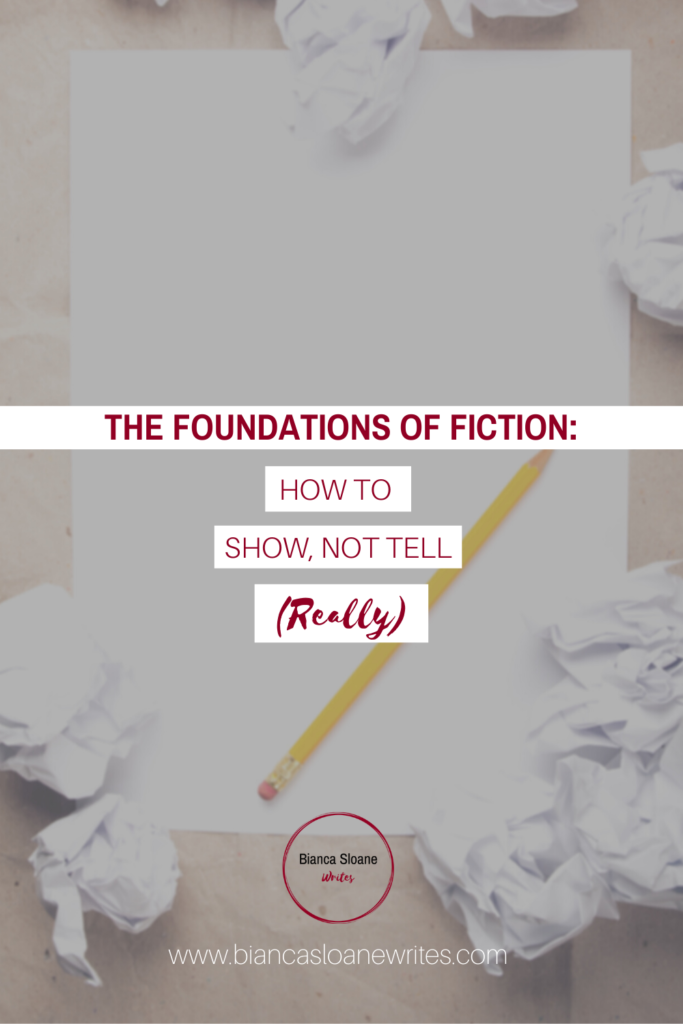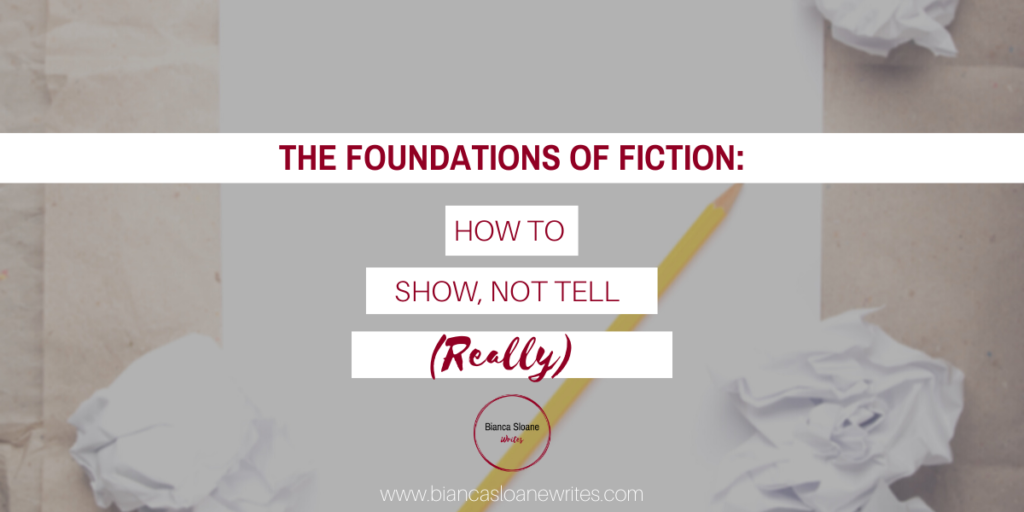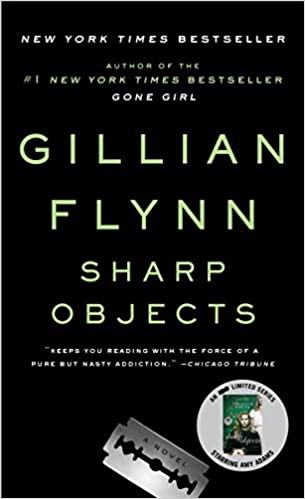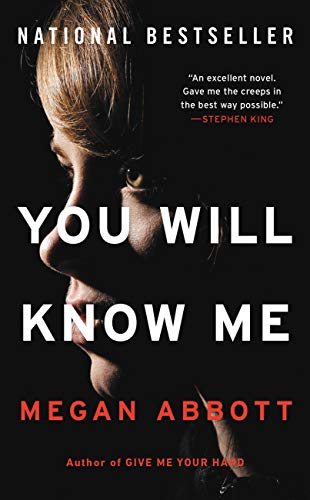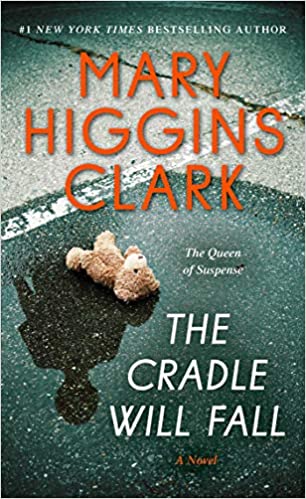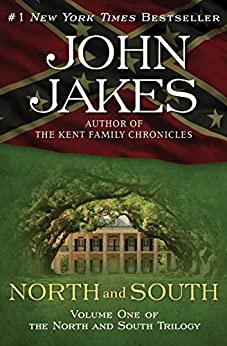Foundations of Fiction: How to Show, Not Tell (Really)
The posts on Bianca Sloane Writes contain affiliate links, which may give a percentage of your purchases back to Bianca Sloane.
“Show, Not Tell.”
Any newbie writer with a completed – or partially completed – manuscript has had that dreaded phrase scribbled across their hard work. Hands down, “Show, Not Tell” is the most freely given feedback dished out to new writers. Yet much like dialogue, nobody ever really tells you, how, exactly you’re supposed to accomplish it.
Show, Not Tell, simply put, means to be descriptive in your writing as opposed to using exposition, summary, or reporting. To paraphrase playwright Anton Chekhov, “Don’t tell me the moon is shining; show me the glint of light on broken glass.”
Show, Not Tell is definitely one of the hardest concepts to master in fiction, but once you get a feel for how to apply certain steps, it becomes easier. Promise.
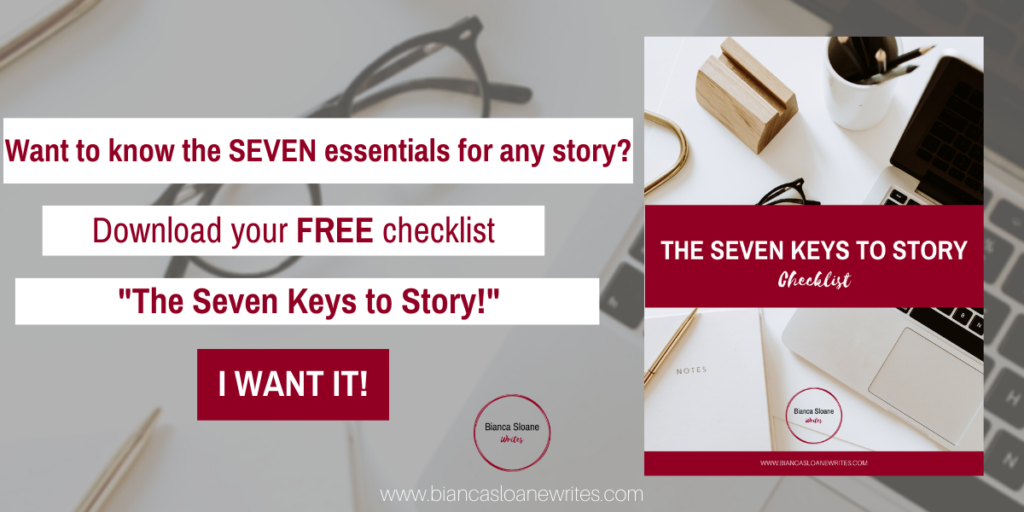
How to Show, Not Tell
When thinking about the “Show” part of the equation, determine what you’re seeing or experiencing. With the “Not Tell,” half, you want to avoid “telling” us or reporting what’s happening.
So, what do you do instead?
Here are three ways to approach – and conquer – “Show, Not Tell”:
Number One: Use Sensory Detail
The simplest and quickest way to “Show, Not Tell,” is to incorporate sensory detail, or the five senses onto the page:
- What are we SEEING?
- What are we HEARING?
- What are we TASTING?
- What are we TOUCHING/FEELING?
- What are we SMELLING?
That’s it. Use the five senses as your guide to “Show, Not Tell.”
Let’s look at some examples of how to apply sensory detail.
“Don’t tell me the moon is shining; show me the glint of light on broken glass.”
Russian Playwright, Anton Chekhov
For example:
“He was nervous.” (This is classic telling. Stating, “he was nervous” doesn’t give the reader any sense of what being “nervous” feels or looks like.)
The basics:
Let’s strip this down and apply the five senses. What are some of the things that happen to you physically when you’re nervous?
- Cotton mouth (TASTING, FEELING)
- Shaky hands (SEEING)
- Heart races (FEELING)
- Palms sweat (TOUCHING)
- Sweat through your shirt (SMELLING, TOUCHING, SEEING)
- Stomach hurts (FEELING)
- Nauseous (FEELING)
So, incorporating some of those basics—
- “His mouth exploded with cotton and his hands shook as he smoothed his tie down for the tenth time in as many minutes.”
- “His underarms blistered with sweat as he tried to ignore his bowels churning inside of him.”

Another example:
Let’s take another classic “telling” example:
“It was cold.”
What happens when it’s cold?
- Your teeth chatter (SEEING, FEELING, HEARING)
- Nose turns red (SEEING)
- Nose runs (SEEING, FEELING, TASTING)
- Fingers shrivel (SEEING)
- Billowing Breath (SEEING)
- You shiver (FEELING)
- Frost gathers on objects (SEEING, TOUCHING)
- Snow (SEEING, TASTING, SMELLING)
- Windy (SEEING, FEELING, HEARING)
Now, let’s get a little creative with conveying, “It was cold.”:
- “The wind howled through the bare, black branches of the trees, biting into me as icy bits of snow battered my face.”
Anyone who has walked outside on snowy, windy day has experienced the above, so you’re automatically putting the reader into the scene, drawing them into the action. This is what James Patterson refers to as, “Be There.” Help your reader, “Be There” by tapping into the five senses.
Number Two: What Does The Camera See?
Another method to apply to the concept of “Show, Not Tell,” is to ask yourself, “What is the camera seeing?”
Think about watching your favorite TV show and everything that the camera is showing you. It might show you a little girl with blonde pigtails riding a shiny blue bicycle past a row of Quaking Aspens. In other words, that camera isn’t merely showing you, “It was a nice day.” Again, that’s telling. It’s showing what “a nice day,” looks like. “A nice day” can mean literally anything, but doesn’t do anything to convey to the reader what that feels like or what it looks like.
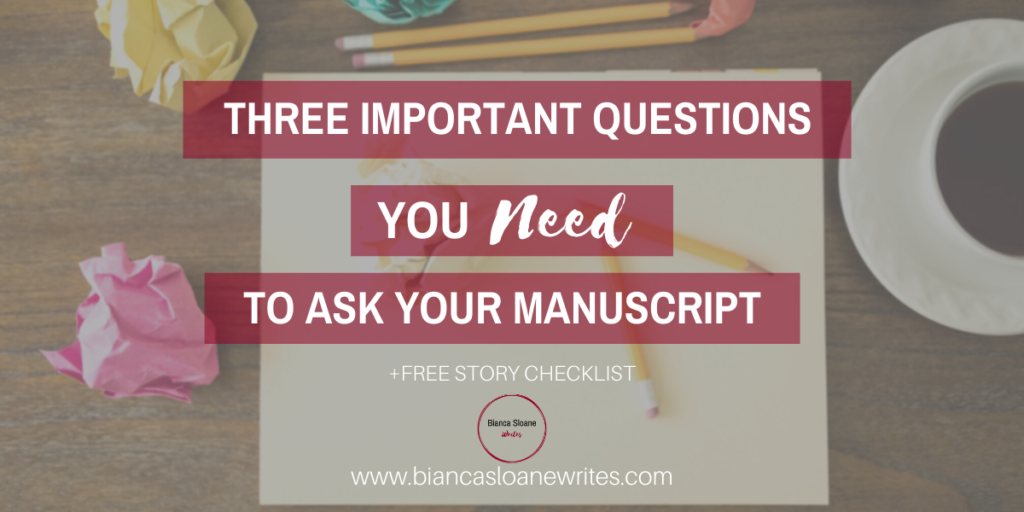
Here’s another example of what the camera might see on a nice day:
- “The late afternoon sun slashed the short blades of the emerald green grass as a warm, soft breeze ruffled the orange petals of the tulips in Celia’s garden.”
In each example, our “nice day,” now has color, movement – a personality. In just one descriptive sentence, we’re smack dab in the middle of what “a nice day,” feels and looks likes.
Let’s do one more:
- “Her movements indicated intense energy and passion for her task.”
Just like the examples above, this doesn’t tell us anything about what intense energy and passion look like.
Try this:
- “Sweat dotted her upper lip as she jabbed the air with her index finger, her words breathlessly crowding into each other while she explained how to operate the dashboard.”
Our imaginary character is jabbing the air with her finger, which demonstrates intensity. She sweating, also suggesting excitement or passion. “Her words breathlessly crowding into each other,” means she’s talking quickly, implying elation or animation over the subject at hand.
Examples in the Wild:
Let’s take a quick look at some examples from a few different novels:
SHARP OBJECTS by Gillian Flynn:
- “They’d been left three days, flurrying like chickens over the food and feces on the carpet.”
Whoa. Super vivid sentence here. We’ve got the imagery of chickens (SEEING), food (SEEING, SMELLING) and feces (SEEING, SMELLING) on the carpet (SEEING, TOUCHING).
Here’s another:
- “I could see her so easily here, sitting cross-legged on that bed, small and sweat-dotted, her eyes ringed with purple. Shuffling cards or combing her doll’s hair or coloring angrily. I could hear that sound: a crayon running in hard lines across a paper. Dark scribbles with the crayon pushed so hard it ripped the paper.”
Yet another vivid passage. A girl sitting cross-legged on a bed (SEEING), sweat-dotted (SEEING), eyes ringed with purple (SEEING). Shuffling cards (HEARING), combing her doll’s hair (TOUCHING). Ripped paper (HEARING).
YOU WILL KNOW ME by Megan Abbott:
“The vinyl banners rippled from the air vent, the restaurant roiling with parents, the bobbing of gymnast heads, music gushing from the weighty speakers keeled on the window ledges.”
Lots of great stuff here. The rippling vinyl banners due to the air vent (SEEING, HEARING, FEELING), the bopping gymnast heads (SEEING) gushing music (HEARING) from weighty speakers (SEEING). You can feel the excitement and energy in this packed, noisy room.
- “An old country road, her purple bug of a car, a luscious grape, darting from the darkness and straight into her cheating lover.”
What a great image of this small car, compared to a grape of all things, zooming down a dark, desolate road on a mission. There’s a sense of urgency, an electricity to this simple, yet vivid sentence.
THE CRADLE WILL FALL by Mary Higgins Clark:
- “She turned the wheel into the skid but could not control the car. It careened onto the shoulder of the road, but the shoulder too was a sheet of ice. Like a skier about to jump, the car poised for an instant at the edge of the shoulder, its wheels lifting as it slammed down the steep embankment into the wooded fields.
A dark shape loomed ahead: a tree. Katie felt the sickening crunch as metal tore into bark. The car shuddered. Her body was flung forward against the wheel, then slammed backward. She raised her arms in front of her face, trying to protect it from the splinters of flying glass that exploded from the windshield. Sharp, biting pain attacked her wrists and knees. The headlights and panel lights went out. Dark, velvety blackness was closing over her as from somewhere off in the distance, she heard a siren.”
Wow. Wow! This is only a glimpse into why Mary Higgins Clark was the Queen of Suspense. Doesn’t this scene make your heart race? Mary Higgins Clark makes the reader FEEL as though they are experiencing this terrifying car crash: a careening car, an icy road, splinters of flying glass, metal tearing into bark, dark, velvety blackness. Each of these images paint an intense, unrelenting scene of danger, of fear.
Much more effective than saying, “Katie was driving along and all of a sudden her car went off the road.”
#Dull.
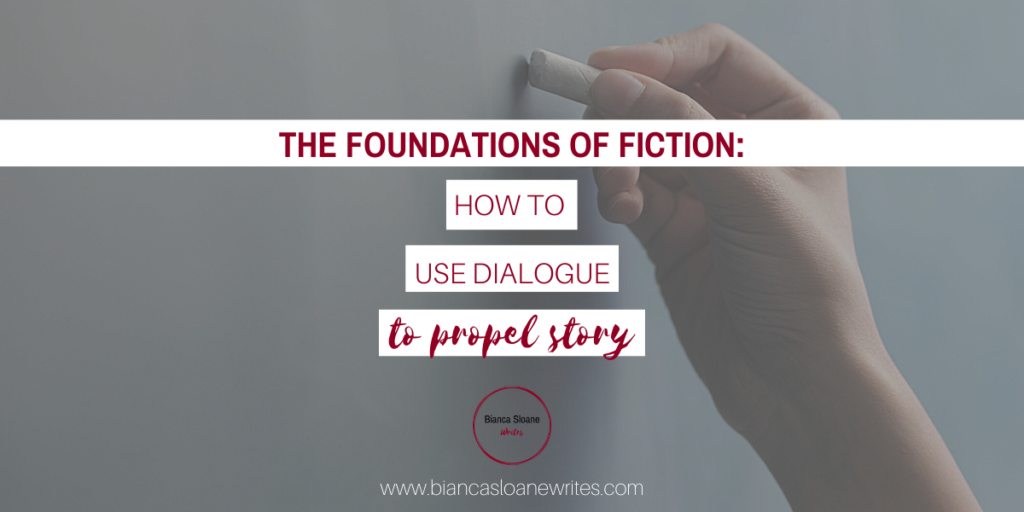
A Quick Note about Telling:
Like everything in fiction, balance is important. A character that is all good or all bad is boring, which is why you give each negative and positive traits, respectively.
In the world of “Show, Not Tell,” a book made up entirely of “Show” would be exhausting. And long. Really. Long. You have to give readers a break to let them catch their breath and relax a bit before turning up the volume again. “Telling” or exposition is necessary to balance out all the “Showing.”
An example of where you might “Tell,” instead of “Show” is to summarize the passage of time between chapters or scenes.
From NORTH AND SOUTH by John Jakes:
“The autumn went faster than Orry had expected. Formations, drill, classroom work, and endless study left little time for anything else. The West Point system was founded on filling all a cadet’s waking moments. Only on Saturday afternoons were plebes free to do what they wished, and often that time had to be spent walking extra rounds of guard duty to work off demerits.”
We don’t need to know every single detail of every single thing that happened every single day of that autumn of 1842 for Orry Main. Which is why summary or “Telling” is effective here. We get an overview of Orry’s experience at West Point during a particular stretch of time without a blow-by-blow account of what he did, which would be boring.
The Takeaway:
If you plan to write fiction, you have to know how to “Show, Not Tell.” It’s one of those, “there’s no way around it,” things.
However, by applying sensory detail to your prose and imagining what the camera sees, you can move beyond, “It was a nice day,” or “It was cold,” to vivid, engaging scenes that suck the reader in to compel them to keep turning the pages.
Like all good things, too much showing is tedious, so make sure to balance it out with some telling or exposition to give the reader a chance to relax.
What are some of your favorite “Showing” passages from fiction?
